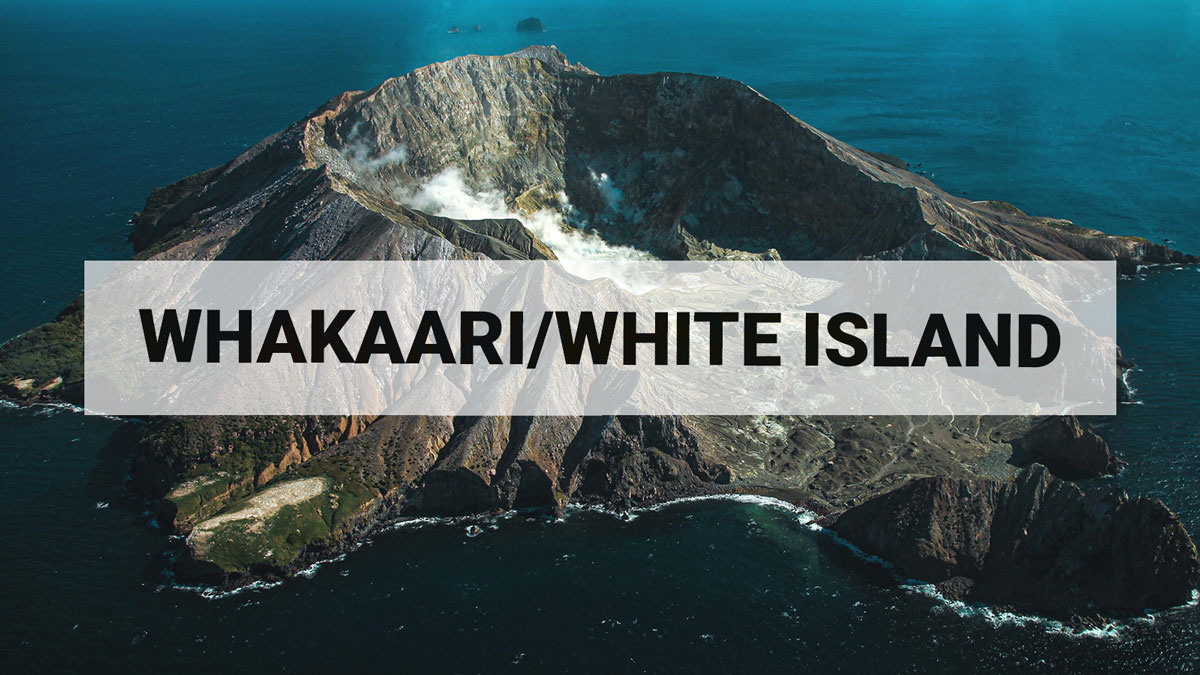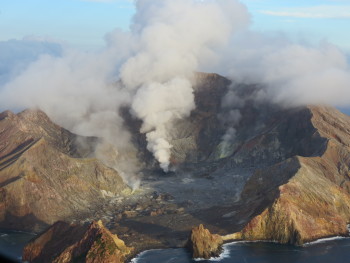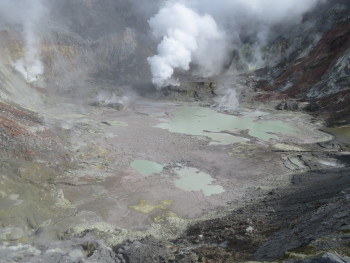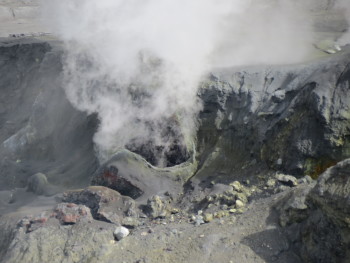
Whakaari/White Island : Volcano remains quiet, moderate gas emissions
Observations during visits to Whakaari/White Island over the last 3-4 months confirm that activity remains at low levels. Activity is confined to the gas rich vents on the western side of the active crater. Hot, clear gas continues to be emitted. Some water has ponded on the floor of the active crater but no permanent lake has reformed. The seismic and acoustic activity generally remain low, and the SO2 gas flux is slowly declining.
The larger hot gas rich vents on the remains of the 2012 lava intrusion are the main source of gas. The temperature of the gas has ranged 250-300 ºC when measured recently. Tour operators reported very minor ash in the gas plume on 20 February; otherwise no changes are apparent. Following larger rainfall events on the island water is ponding on the crater floor, but soon soaks away or is evaporated. Hence no Crater Lake has reformed.
Seismic activity on the volcano during the last 3-4 months has been at low levels, punctuated occasionally by minor periods of small local earthquakes or weak volcanic tremor. A sequence of very small high frequency events has been apparent since 26 March but is now declining. No acoustic signals (explosions) have been detected.
The largest accessible fumarole, known as F0 has been sampled and we have regularly measured its temperature. This has ranged 170-182 °C over the last few months. SO2 gas flux as measured by the automatic DOAS sensors has declined from around 400 tonnes/day to 200 tonnes/day post January, but remaining above the pre-2011 values (50-100 tonnes/day).
We continue to monitor the volcano for possible renewed activity. The Volcanic Alert Level remains at Level 1. The Aviation Colour code remains Green.
Art Jolly (Duty Volcanologist)
Media Contact: Brad Scott (07 3748211)


